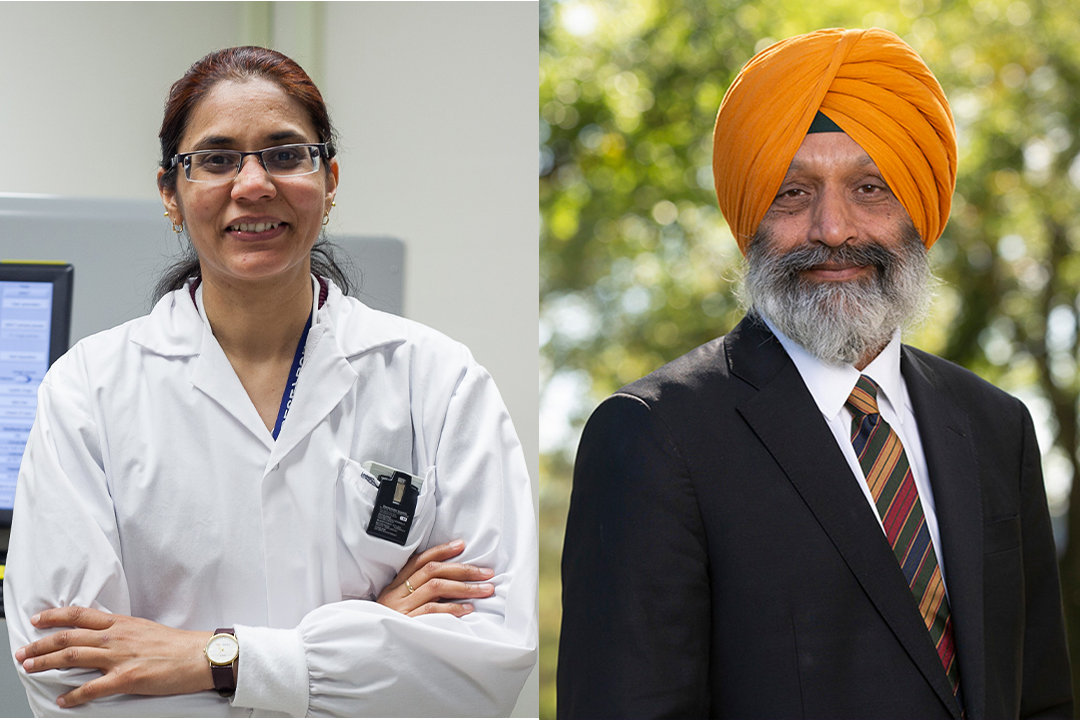Researchers probe protein’s role as lung’s first line of defence
Having spent more than two years in the midst of a COVID-19 pandemic, scientists and the public have learned a great deal more about respiratory infections and the lung complications that can result from having one.
By Brooke FowlerPhoto: iStockPhoto.com (MJFelt).
A research team at the Western College of Veterinary Medicine (WCVM) is focusing on a question that’s particularly relevant during this pandemic: could a protein that’s expressed in our lungs during inflammation potentially lead scientists to new therapies for respiratory infections?
At the centre of the team’s investigation is the protein called pentraxin 3 (PTX3). Although the researchers know that PTX3 plays an important role in the first line of defence against invading pathogens (disease agents) during pulmonary infections and diseases, they’re working to gain a better understanding of its exact function.
Its mechanisms are still unclear, but researchers have confirmed that PTX3 is a protein that plays an important role in preventing infection from certain viruses and bacteria in the lung. Produced by different cell types in response to the inflammatory processes, PTX3 has a role in tissue remodelling. Studies indicate that it’s essential to the resistance of certain pathogens.
Led by Dr. Baljit Singh from the WCVM’s Department of Veterinary Biomedical Sciences and Dr. Gurpreet Kaur Aulakh from the college’s Department of Small Animal Clinical Sciences, the researchers are using a laboratory technique called immunofluorescent staining to localize PTX3 in the lungs of healthy and unhealthy animals — particularly horses, pigs and people. By localizing the protein, they hope to gain insight into the specific cell types that express PTX3 in unhealthy lungs.
Their comparisons of lungs in the study’s control group and infected lungs have revealed an enormous increase of PTX3 circulation in animals with any lung infection that causes inflammation.

The increased expression and the similarities of PTX3 expression in unhealthy lungs compared to healthy lungs has been found in each particular animal species — a fact that suggests PTX3 plays a role in lung inflammation.
While researchers have established that high levels of PTX3 are harmful to inflamed lung tissue, other studies show that lower levels play a role in preventing infection. As a result, the scientists are optimistic that recombinant PTX3 (a genetic recombination of the protein) could potentially be used to treat people and animals with pulmonary infections.
“We suffer from respiratory diseases all the time; we haven’t found a cure for many of them,” says Singh, who is a WCVM professor as well as the University of Saskatchewan’s vice-president of research. His extensive research work involving pulmonary intravascular macrophages (PIM) cells led to his involvement in investigations of PTX3.
“There will always be new diseases which we will encounter, and most of them will be a part of the pulmonary system; all of the major outbreaks such as SARS, Ebola and now COVID-19 in the last 20 years have been respiratory disease outbreaks.”
Since respiratory diseases are one of the leading causes of death in livestock and people, researchers have already conducted extensive studies. However, more work is needed to prevent these respiratory outbreaks or at least to minimize the harm that they cause.
The WCVM team hopes that its studies of PTX3 will provide further understanding of the protein that will eventually lead to novel therapies and better methods for coping with respiratory infections in all mammals — including people.
The Natural Sciences and Engineering Research Council of Canada (NSERC) and the University of Saskatchewan are providing funding for this research initiative.
Brooke Fowler of Saskatoon, Sask., is a fourth-year student in the University of Saskatchewan’s College of Agriculture and Bioresources who worked as a summer research student in 2021. Her story is part of a series of articles written by WCVM summer research students.
